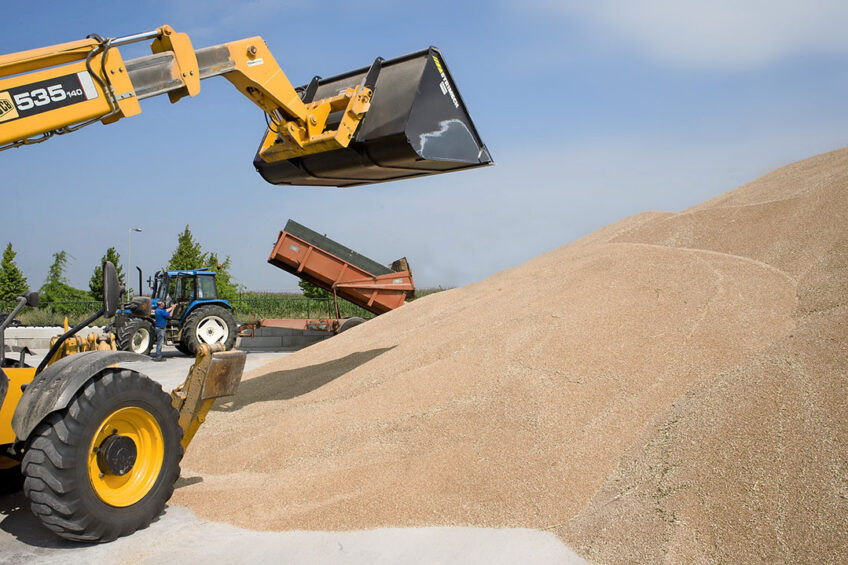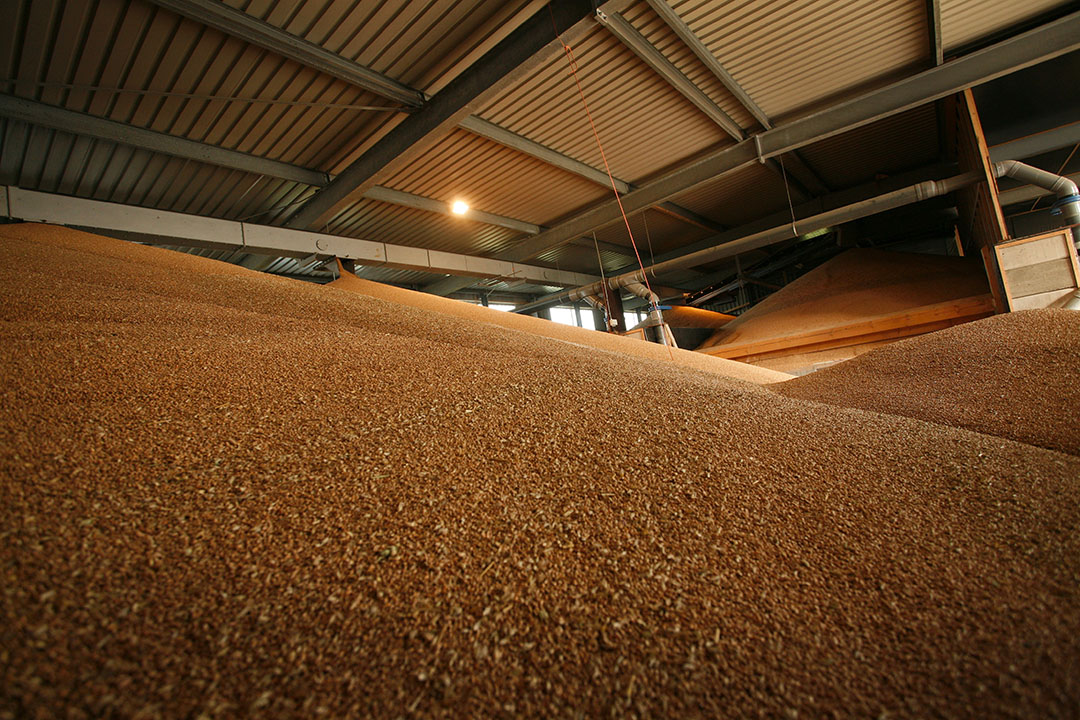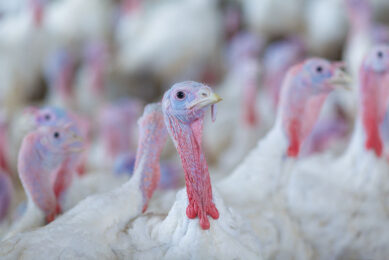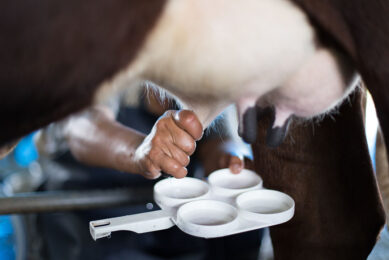Mitigating mycotoxin development in storage

Control of temperature and moisture to a safe storage level can be a big factor to mitigating mycotoxins in animal feed. Good storage measures can be taken to further reduce the risk of mycotoxins and mould development in the feed.
Mycotoxin exposure is a major concern in agricultural production. Feed can be contaminated by several fungal species, and infected feed impacts the performance and quality of livestock production. Although prevention of mould and mycotoxin contamination is almost impossible, producers and feed companies that adopt an integrated management programme will go a long way in mitigating the risk of contamination in the animal feed supply chain.
A team of researchers at the University of Milan, including second year PhD student Francesca Fumagalli and researchers Federica Cheli, Luciano Pinotti and Matteo Ottoboni, has come up with an innovative and integrated system for handling mycotoxins along the feed chain. Although their strategy focuses on all critical control points along the entire feed chain, farmers will want to pay special attention to recommended strategies in storage, especially at this time of year.
Strategies for mitigating mycotoxin infestation
While mycotoxin contamination can occur at all crop development stages, as well as at harvest, it can also occur in storage following harvest. The consequences of poor storage are loss of grain quality and quantity.
“Storage grain losses account for 10 to 20%, as a result of insect damages, and nearly 420 Mt of grains are wasted during storage yearly,” wrote the paper’s authors.
The comprehensive paper was published in the scientific journal Toxins, an international, peer-reviewed, open access journal that publishes for studies related to toxinology.
Quality storage starts with the grain that enters storage. Grain should be in the proper condition when entering storage. Parameters such as moisture and disease levels, and kernel entirety are most important.
“The key word is prevention,” says Cheli. “Sometimes, during storage, we can have more problems with contamination.”
One of the best ways to mitigate mycotoxin development is through the control of abiotic factors, such as water, air and temperature. Of course, this is only relevant in conditions where biotic factors, such as grain, bacteria, yeast and fungi, are controlled.
Grain should be dried as quickly as possible, adds Cheli. In silage especially, microclimates can develop, she adds, leading to the growth of fungus and even mycotoxins. A good silage yard is crucial to mitigating their development.

Recommended moisture and humidity levels
In suitable storage units, mycotoxins and fungus can still develop, but are easier to contain. In poorer storage units, feed quality can diminish quickly, depending on how bad conditions are. To avoid potential issues, storage facilities should be cleaned and sanitised before new batches of grain enter the unit. This is done to limit the accumulation of dust, which favours mould development. Residues should not exceed authorised levels.
Cheli recommends that, at harvest, growers move grain as quickly as possible to avoid the risk of storing grain at varying moisture and humidity levels. When one part of the crop has higher dry matter content it’s more difficult to compress and remove air, she said. Loading grain on consecutive days under different environmental conditions can open the door to possible contamination.
Recommended internal humidity should be less than 17 to 20%, depending on the crop. During this important phase, controlling the atmosphere within the storage facility is a strong strategy for mycotoxin prevention. Scientific literature highlights high N2 concentration as a possible large-scale, eco-friendly and low-cost prevention method in stored cereals. Temperature and humidity increases should be avoided, as too should condensation inside the storage structure.
Importance of monitoring & controlling the environment
In her literature review, PhD student Fumagalli pointed to the importance of monitoring and controlling the atmosphere within the storage unit. Large-scale storage facilities use sensor technology to monitor fluctuations in temperature and condensation; fewer small-scale operations use this technology.
Real-time monitoring
Real-time monitoring systems can be used in individual silos, or in several silos at once in a network that gathers meaningful data on the quality of stored grain. Fumagalli says that the literature suggests that sensor technology is a good investment for all grain storage units, no matter their size.
Smell technology
E-nose technology offers another option for grain storage facilities, says Cheli. “When fungus is growing and mycotoxins are produced, the production of mycotoxins are associated with different aromas,” she explains.
The electronic nose can evaluate the smell print related to the production of different mycotoxins present and, in some cases, quantify their levels. There are currently 2 electronic noses on the market. One is more suited for use in storage units, while the other is better suited to lab conditions.
Image technology
Another option for detecting the presence of mycotoxin is image analysis. Image analysis tools evaluate grain colour, and look for broken or damaged grain, which are factors that can be related to the presence of mycotoxin evaluation. They are also available for storage units.
Real-time analysis cannot stop mycotoxins and fungi from further developing, but they can help assess grain quality so end users can determine whether it is fit for consumption.
Sensor technology
Sensor technology can also be used for real-time analysis in feed plants to speed up commodity screening. Luciano Pinotti, a feed evaluation specialist at the University of Milan, worked closely with a large cereal company to evaluate this concept.
“We were able to demonstrate that actually, the electronic nose is able to distinguish when some mycotoxins are present instead of absent,” says Pinotti. “Of course, there is a lot of work that we need to do in order to train the instrument.”
“Once the method is validated, it’s going to be user-friendly method,” adds Cheli. “But before you have a lot of work in order to find the samples, to elaborate [on] the huge amount of data, and you need a lot of expertise in statistical analysis.”
Alternative methods
Grain contamination can occur where insects and microorganisms are present. Preventing infestations of rodents and birds, as well as insects, in storage facilities can, therefore, help mitigate future issues. To do this, many growers rely on products such as phosphine and essential oils.
Other methods that help mitigate mycotoxin development include the use of mould inhibitors, including acidifiers such as organic acids, antioxidants, or essential oils. Grain aeration, movement and ventilation will keep microclimates that are at risk for mycotoxin development from developing. When infected grain is identified, it needs to be removed not only from the storage unit, but also from the feed supply chain.
Pre-harvest prevention
Real-time monitoring systems don’t simply improve the quality of storage and reduce losses. They also reduce workforce and labour intensity. Mycotoxin mitigation, however, is a year-round process, which is why the researchers’ paper includes a comprehensive list of strategies that starts with pre-harvest prevention, and includes strategies for harvest, feed mill operations and transportation, as well as storage. “To do everything is probably too much, but we have to implement what we have,” Pinotti concludes.






